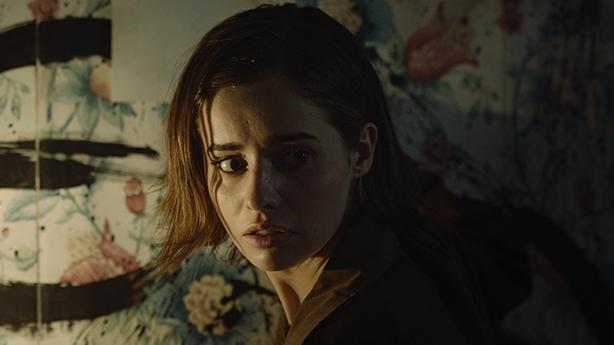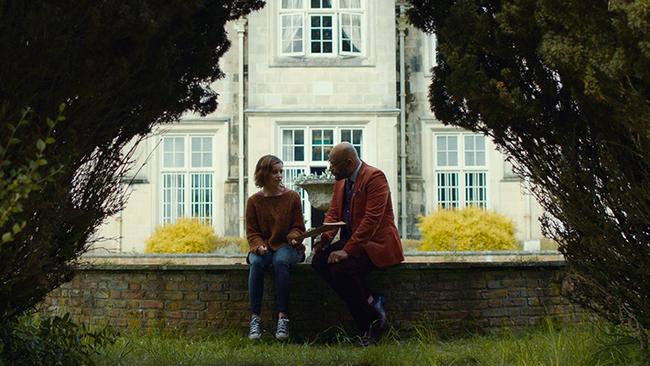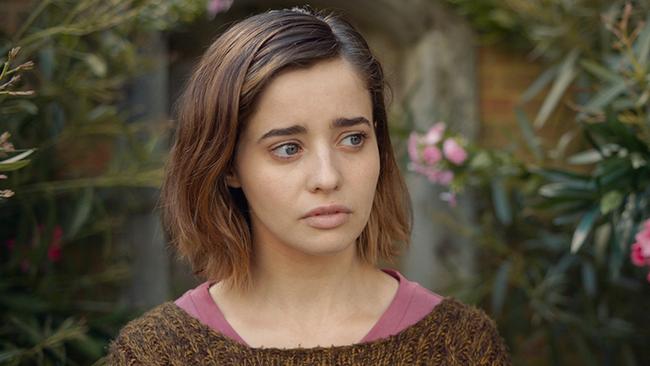Erica: New narrative adventure game blurs the line between TV and gaming
It’s the new narrative adventure game that experiments with unique approaches to interactive storytelling. However Erica doesn’t quite hit the mark, writes Stephanie “Hex” Bendixsen

Hex
Don't miss out on the headlines from Hex. Followed categories will be added to My News.
Full Motion Video or FMV games hit it big in the 90s — but truth be told they’ve always been considered a bit naff. Modern narrative games favour hi-tech GCI to recreate an actor’s likeness as well as recording their physical performance and voice. While it means wandering into the sometimes uncomfortable “uncanny valley” — for the most part, this is accepted by gamers as an acceptable representation of a video game character within the digital experience.
Full motion video, however — seems almost like cheating. I remember enjoying it in games like Command & Conquer: Red Alert 3, where a melodramatic Tim Curry would make megalomaniacal speeches and a stereotypical Soviet tyrant. It didn’t at all take itself too seriously and once the cut-scene was over, you’d be thrown back into the digital realm to get stuck into the real-time strategy of the game.

Erica falls into the ‘narrative adventure’ category of FMV games — where the entire story is filmed video and the player is relegated to making choices to guide the narrative. Think “choose-your-own-adventure” but on your TV. Plenty of narrative games use this mechanic as their main gameplay device, however there are elements of FMV that are very limiting when it comes to player involvement. In games like Until Dawn, Detroit: Become Human or the recent Man Of Medan are all CG games that although using real actors, their performances use motion capture (mo-cap) to digitally represent them within the game. This allows the action to be much more agile with greater capacity to manipulate. Making dialogue and story choices is a big part of the game, however you’re kept on your toes with frequent and unforgiving quick-time events. Fail to hit the right button at the right time — you’ll fail the action, often with disastrous consequences for the protagonist.
Erica on the other hand is beautifully shot and wonderfully lit creative drama. The story is intriguing, the actor’s performances are excellent — and I was immediately drawn in by the mystery. A girl with powers of premonition, her father murdered by some sort of vengeful occultist — and all clues leading back to the asylum he founded when he was alive. Throw-in a score composed by legendary video game music composer Austin Wintory and I was thoroughly on board.

The problem lies primarily with a lack of engaging interaction. In Erica, player involvement felt limited at best, and at worst, tokenistic. For the developers, filming each scene, decision outcome, each dialogue option or potential action is a long and complicated process. Without the ability to make changes, adjustments or digitally populate a series of outcomes in post, the result feels slow and clunky compared to its digital counterparts.
There are no “quick-time events” in Erica. You do have an imposed time-limit when it comes to making certain choices, but without any sort of reflex-based action to keep you on your toes, I found myself forgetting that I was even playing a game at all — rather, that I’d settled in to watch a movie. In fact, similar game-like TV experiences have popped-up on Netflix in the past year: Charlie Brooker’s Bandersnatch — where you guide the story with your TV remote — as well as an utterly ridiculous Bear Grylls adventure (but good on him for branching out into new forms of media, I suppose). Clearly the line between video games and TV are becoming increasingly blurred.

In Erica, you control the action via a smartphone app — and while this was certainly intuitive and easy to pick-up and play — I think it played into the lack of reflex-based player involvement somewhat, meaning I was far more likely to just zone-out and forget to play my part in the whole thing. In saying that, the story itself was gripping enough that I happily powered through it in one sitting.
Unfortunately the ending I chose was rather disappointing, like something of an afterthought. In fact at one point it seemed clear I had two major choices; and after making the “darker” choice, I then made another choice which seemed to reroute me back to that original decision moment — something I find incredibly frustrating when it comes to story structure and speaks to lazy narrative design. Then — the game sort of just ended, with a text-screen telling me that everything had more-or-less worked out fine for the central character. Really? Had I chosen the ending I assume the developers had spent more time on, I imagine there would have been more interesting resolution — however there was no option to see that play out without replaying the whole thing from the start, so perhaps I’ll leave that for another day.
MORE: BLAIR WITCH TRIES HARD BUT DOES IT TERRIFY?
CONTROL ISN’T GAME OF THE YEAR, BUT WORTH CELEBRATING
SIMS 4 BRINGS YOUR REAL-LIFE INSECURITIES OUT
All in all, I’m glad we’re starting to see more experimentation with narrative styles and unique approaches to interactive storytelling. Perhaps if I’d come across Erica on a TV streaming platform I’d have been more on board with the style of gameplay it offered, because it would have presented it as “story with a bit of game” as opposed to “game with a focus on story”. It’s hard to classify this as a game, and I’m probably as inclusive as they come when it comes to labelling things.
Erica is certainly worth playing — as long as you’re comfortable in the knowledge that you’re role is less player and more story director.


